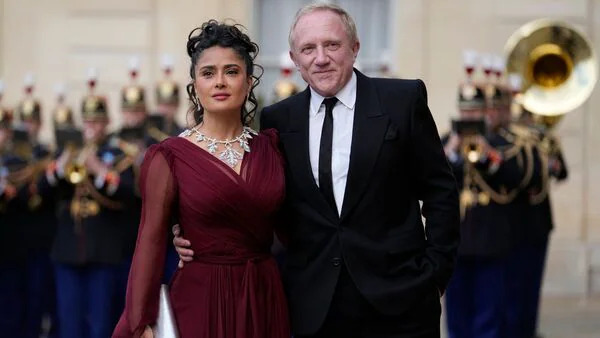Just hours before a highly anticipated runway show at the Tate Modern museum in May, François-Henri Pinault, the billionaire owner of Gucci, convened with his newly appointed leadership team at their London office. This was no ordinary meeting; it marked a critical turning point for one of the world’s most iconic fashion brands. Pinault’s growing frustration with Gucci’s stagnation and underperformance had reached a tipping point. The decisions made that day would lead to a dramatic reinvention of the brand, aimed at reestablishing its position at the forefront of luxury fashion.
The Prelude to Reinvention
Despite its rich history and reputation for opulence, Gucci had been struggling to maintain its market position amidst changing consumer preferences and fierce competition. Recognizing the urgent need for a turnaround, Pinault, the chairman and CEO of Kering, Gucci’s parent company, knew it was time for decisive action. His impatience was not merely about financial performance; it was about revitalizing a cultural icon.
New Leadership Takes Charge
Pinault’s first major step was to restructure the leadership team, appointing Marco Bizzarri as CEO and Alessandro Michele as Creative Director. Bizzarri, known for his strategic expertise, and Michele, celebrated for his creative prowess, were tasked with revitalizing Gucci. Their mission was to honor the brand’s storied past while innovating to captivate a new generation of consumers.
Crafting a Bold New Vision
Leading up to the Tate Modern show, Bizzarri and Michele worked tirelessly to develop a vision that would resonate with both traditional luxury consumers and a younger, more eclectic audience. Michele’s approach was daring and unapologetic, blending historical references with contemporary flair. His goal was clear: Gucci would not just follow trends; it would set them.
The Tate Modern Show: A Symbolic Rebirth
The runway show at the Tate Modern was more than a display of new collections; it was a bold statement of intent. The choice of venue, a contemporary art museum, reflected Gucci’s commitment to innovation and cultural relevance. The collection showcased a mix of vintage-inspired pieces and avant-garde designs, signaling a shift away from the predictable towards the daring and unexpected.
The event, attended by celebrities and fashion icons, received widespread acclaim and set the tone for Gucci’s reinvention. It was evident that the brand was ready to embrace change and redefine luxury for the modern era.
Embracing Digital Transformation
Recognizing the importance of a strong online presence, Bizzarri and Michele prioritized digital transformation. They revamped Gucci’s e-commerce platform, incorporating advanced technology to enhance the online shopping experience. The brand also leveraged social media and digital marketing to create a more interactive and immersive brand narrative, engaging with younger, tech-savvy consumers.
Commitment to Sustainability and Ethical Fashion
With consumers increasingly focused on sustainability and ethical practices, Gucci made significant commitments in these areas. The brand announced ambitious goals for reducing its environmental impact, including a pledge to achieve carbon neutrality. Gucci also emphasized transparency in its supply chain, ensuring that ethical standards were maintained at every stage of production.
Reconnecting with Heritage
While innovation was crucial, Bizzarri and Michele understood the importance of reconnecting with Gucci’s rich heritage. Drawing inspiration from the brand’s archives, Michele reinterpreted classic designs for contemporary tastes. This approach appealed to loyal customers who valued tradition, while also attracting new customers with the timeless elegance of Gucci’s offerings.
Expanding Product Lines
Gucci’s reinvention extended beyond fashion into new product categories. The brand expanded its offerings to include home decor, lifestyle products, and collaborations with other iconic brands. These strategic moves helped diversify Gucci’s portfolio and attract a broader customer base.
Impact on Financial Performance
The impact of Gucci’s reinvention was soon reflected in its financial performance. Sales surged as the brand regained its status as a leader in luxury fashion. The innovative collections, combined with a strong digital presence and a commitment to sustainability, resonated with consumers worldwide. Gucci not only recovered but also surpassed its previous achievements, becoming a model of successful brand reinvention.
Looking Forward
The transformation of Gucci under Pinault’s decisive leadership and the visionary guidance of Bizzarri and Michele is a testament to the power of strategic reinvention. However, the journey is far from over. The fashion industry is continuously evolving, and Gucci must keep innovating and adapting to stay ahead.
Gucci’s grand reinvention story is one of bold decisions and visionary leadership. François-Henri Pinault’s impatience with stagnation catalyzed a transformative era for one of the world’s most iconic brands. With a new leadership team, a clear vision, and a commitment to innovation and sustainability, Gucci has reclaimed its place at the top and set new standards in luxury fashion. The Tate Modern runway show was just the beginning of a remarkable journey, proving that with the right strategy, even the most established brands can reinvent themselves and thrive in a changing world.
Disclaimer: The thoughts and opinions stated in this article are solely those of the author and do not necessarily reflect the views or positions of any entities represented and we recommend referring to more recent and reliable sources for up-to-date information.



